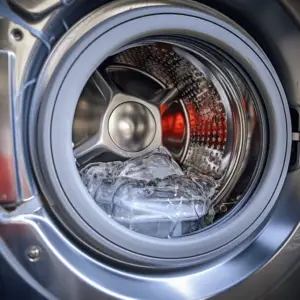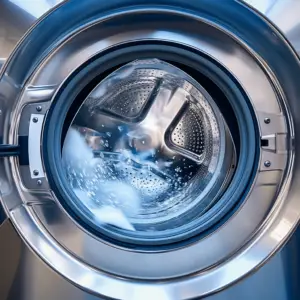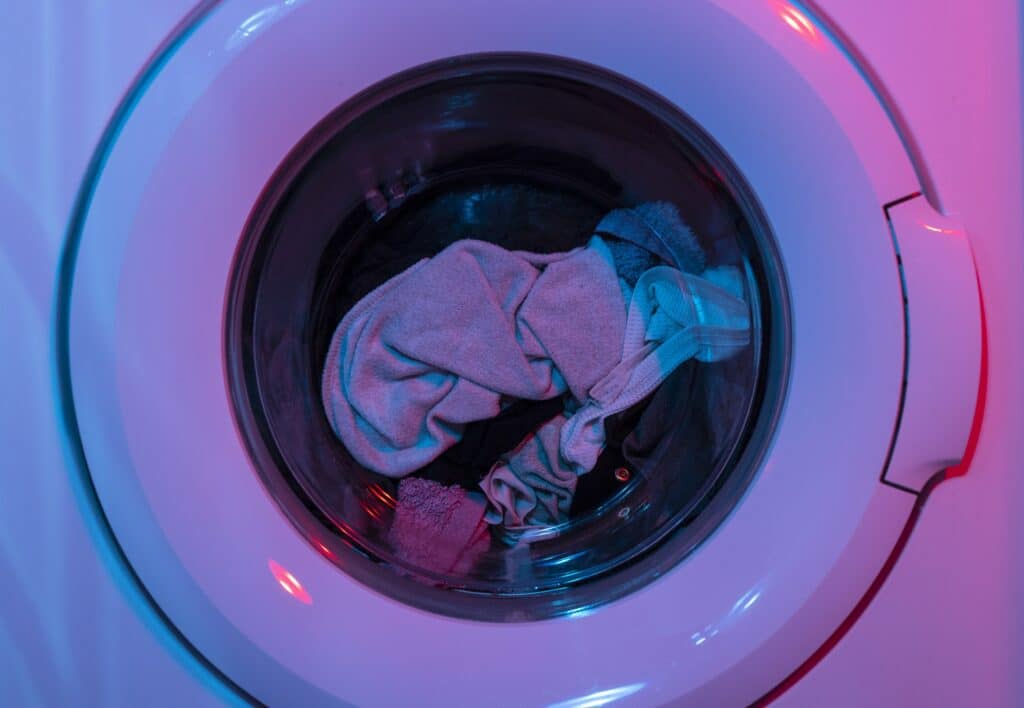Washer won’t spin, Spinning issues in modern washing machines are always a common repair problem for most owners. It may be a front or top load washer, but whatever the case, sooner or later, you are bound to come across a spinning error. The machine may fail to complete a spin cycle or even stop spinning while you try to do your laundry.
As such, any washing machine owner should learn how to fix a washer that won’t spin. Not only repair but also know what makes a washer not spin or spin slowly in other situations.
Fortunately, our article today explores the different possible culprits and how best to fix each situation. Here’s the laydown.
Table of Contents
Washing Machine Won’t Spin or Drain: What to Do

Of course, any washer must spin to allow laundry and the cleaning solution to mix inside the drum. During the final cleaning process, cleaning your laundry load also sees the drum spin and extract water from your clothes. In your case, the drum fails to spin at all while everything seems okay. Well, that’s further from the truth since the following problems could be lurking inside your washer.
Possible Technical Failure
As a household appliance, there is every chance you are bound to come across technical failure in your washer. Even a simple electrical spike might stop your washing machine from functioning, including the spinning stopping altogether. If this happens, try to restart your appliance by unplugging and plugging it back in again. If this does not work, it’s best to contact the authorized repair service listed for your washer.
Go Slow On The Detergent
There is the possibility of too much detergent being the cause of your washer not spinning at all. When you use too much detergent, that creates excess foam in the drum slowing down the cleaning process. In such scenarios, the spinning cycle comes to a halt since the drum is full of foam while also adding the laundry. As a remedy, be sure that the detergent amount is only to a recommended dose and not too much. Additionally, you should read your washer’s instructions on detergent use and find out what fits your particular washing machine.
Uneven Load Inside
At times you can decide to wash all your heavy laundry at one go due to the convenience of having a washing machine. However, this often causes damage to your washing machine, including killing the spinning process during the cleaning.
A good example is how heavily absorbent laundry such as towels, rugs, and blankets present an uneven load inside and stop the spinning cycle. Such situations call for you to distribute your laundry inside the drum to avoid damage. Some washing machines even come with load inspection technology which stops if the load inside is unevenly distributed.
Ensure Proper Closing
Aside from an uneven load, you could be having a fault washer door as the culprit in stopping the spinning cycle. In particular, modern-day washing machines will not start functioning unless the door is shut.
While it might be a faulty door, you can also check for laundry items that get stuck at the door. Push all your laundry inside the drum and close the door till you hear a locking sound.
Check for Leftover Water
After a past cleaning process, you could be having leftover water that has not drained after a cleanup cycle. Often, washer owners can overlook the past drain water without knowing it could cause a stop to the spinning cycle. The solution here is for frequent checks inside for any leftover water before another spinning cycle starts.
All to do is switch the washing machine off and check that the pump filter and drain hose are functioning correctly. Where necessary, straighten and unclog the hoses present around the drain pump to ensure adequate flow.
In addition, you can replace any leaking or puncture hoses to avoid any build-up of residual leftover water inside the washer. Overall, the general rule is to check the manufacturer’s instructions for the inspection and replacement.
Drive Motor Problems
Mechanical problems such as the drive motor are another culprit to know when learning how to fix a washer that won’t spin. Remember, the drive motor is responsible for the washer’s spin mode, and its damage means your spinning function is no more. Like other technical issues, a drive motor problem means hiring an authorized professional to check and repair any washer motor problem you have.
Potential Drive belt Damage
Like the motor, the drive belt is another critical component in ensuring a successful spinning cycle for your washer. In the case of a washer not spinning, then the washing machine’s drive belt may be broken or damaged beyond fixing.
But before judging, check for the drive belt condition by opening the door and spinning the drum using your hands. If the drum turns with no resistance, ensure that the drive belt is broken or damaged. Like other mechanical problems, you should contact the authorized repair service agent listed as per the washing machine instructions.
Washing Machine Will Spin Slowly

Perhaps your washing machine drum spins, but only at a slow pace. You could most likely be working with an uneven laundry load inside the washer if that is present. Consider that modern washing machines come with advanced technology which inspects the load and determines the speed of the spin cycle. If the load is heavy and uneven, the machine goes into a slow mode to prevent damage to various parts such as the drum, bearings, and springs. This mechanism kicks into play whenever the laundry puts more pressure into the washer unlike the typical cleaning cycle.
The Laydown
Once you learn how to fix a washer that won’t spin, your washing machine seems a less complex household appliance. So, next time it happens, the spin cycle stops; you are sure to know the potential problems and know how best to fix them. Just remember to follow your manufacturer’s guide on the repair and replacement of the washer’s parts.


